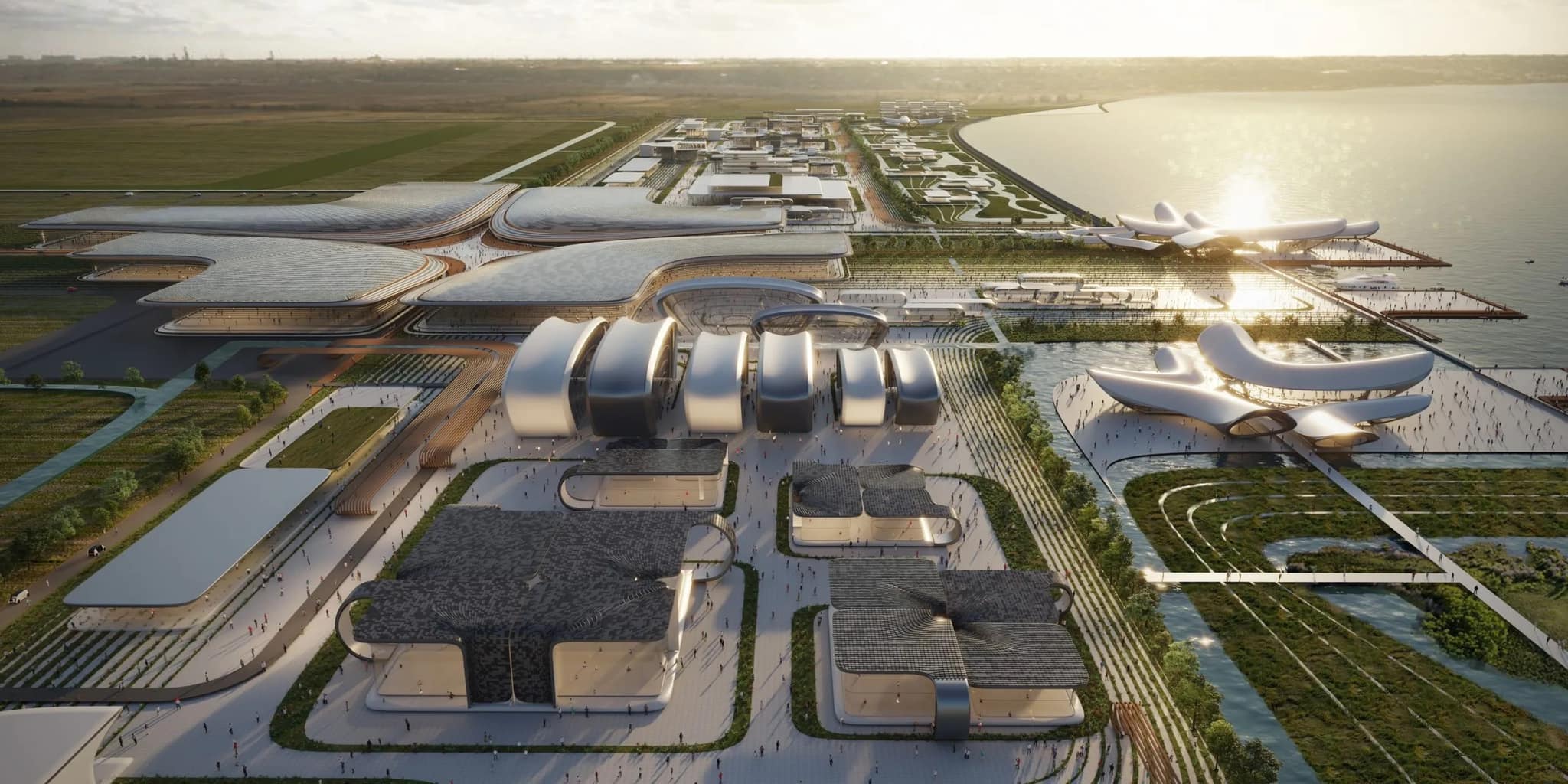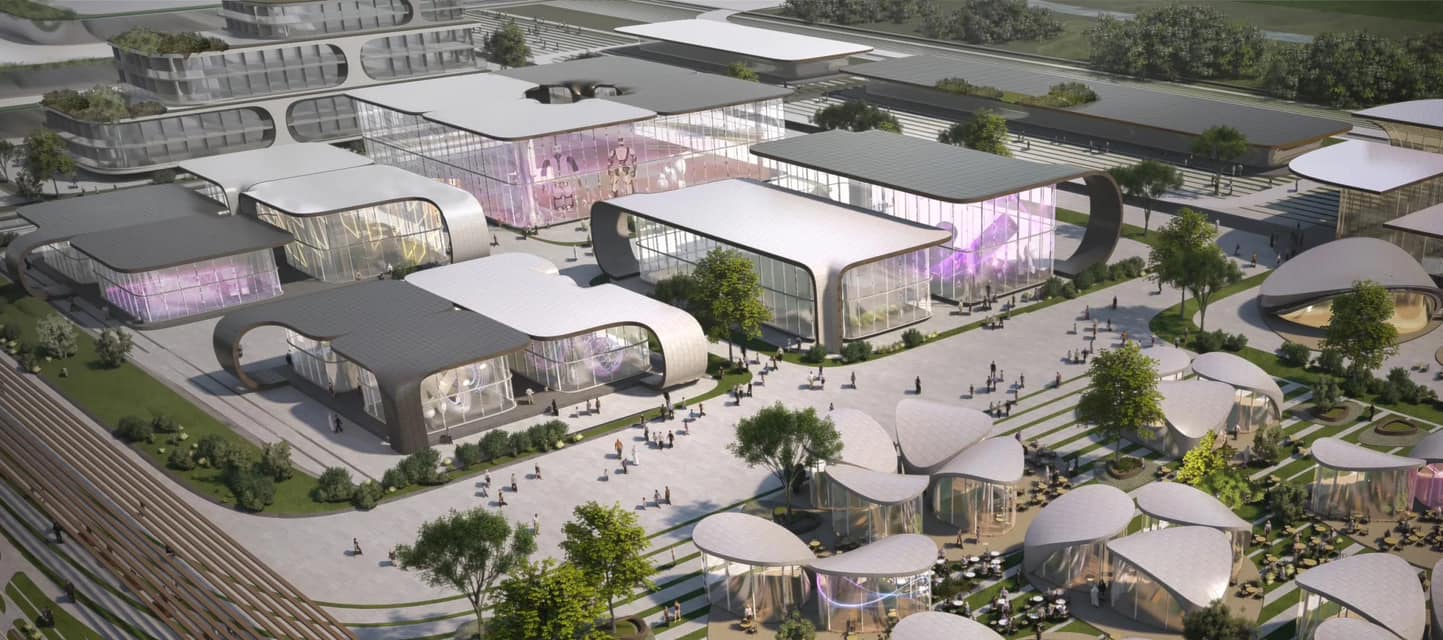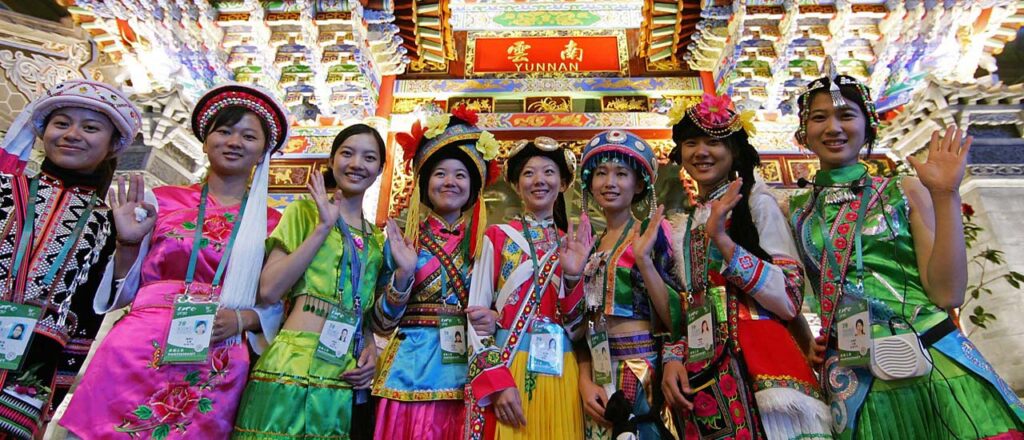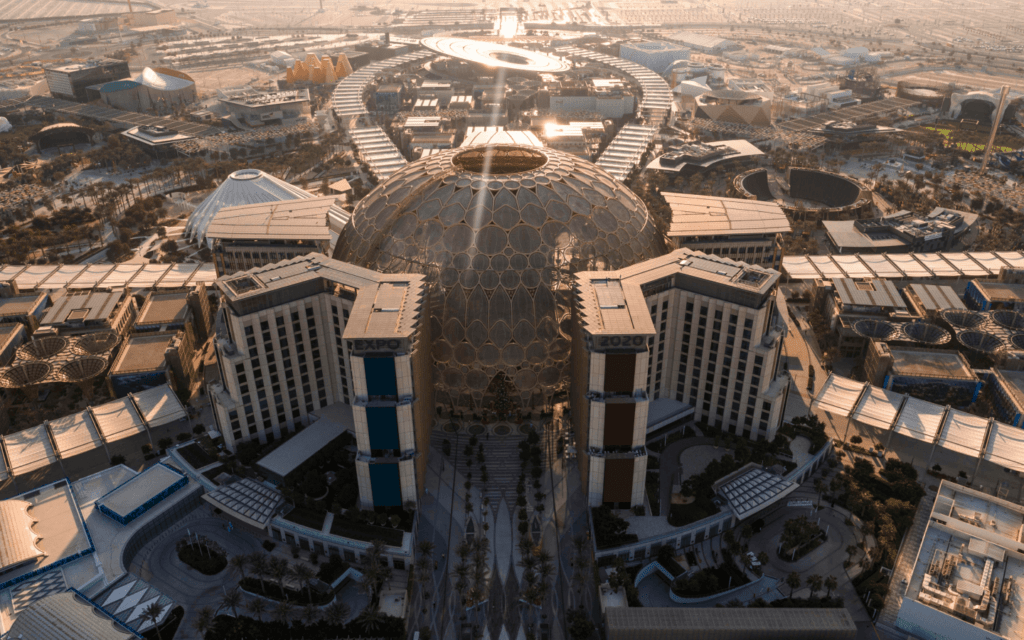by Jim Ogul
These are busy times in the world’s fair space. Expo 2020 Dubai attained its attendance goals (more than 24 million) in the midst of the Covid pandemic – and we could see another major Expo in the Middle East very soon. The United States is bidding to host a Specialized Expo for the first time in 40 years. In Japan, the Osaka region – host to one of the most celebrated and successful world’s fairs in 1970 – will host again in 2025.
To help direct attention and support to their countries’ Expo bids, presidents, kings, prime ministers and surgeon generals are all exercising due diplomacy. With five countries vying to host the specialized expo in 2027/28, and four competing to host in 2030, ambitions are high, and competition is fierce.
The Bureau International Des Exhibitions (BIE) has sent an official Enquiry Mission team to each of the five countries bidding for 2027/2028. In Spain, King Felipe met with the BIE team regarding Malaga’s bid. In Belgrade, the BIE team was greeted by the Prime Minister of the Republic of Serbia. Likewise, President Alberto Fernández of Argentina and Prime Minister Prayut Chan-o-cha of Thailand were on hand to represent their respective countries’ bids, and in Washington, D.C., among those welcoming the BIE enquiry team for the Minnesota 2027 bid was U.S. Surgeon General, Vice Admiral Vivek H. Murthy. Each of the five bids got a thumbs-up for the next steps of the selection process, which will culminate in a vote of the 170 BIE member states at the organization’s General Assembly in June 2023.
The BIE, which is headquartered in Paris, sanctions two categories of world’s fairs. Six-month World Expos take place every five years. Smaller, three-month Specialized Expos pop up in the years between World Expos. The most recent World Expo was Expo 2020 Dubai, held October 1, 2021-March 31, 2022.
A total of five World Expos have taken place so far this century: Hannover, Germany (2000); Aichi, Japan (2005); Shanghai, China (2010); Milan, Italy (2015); and Dubai. Their combined attendance adds up to more than 159 million visits. There have also been three Specialized Expos: in Zaragoza, Spain (2008); Yeosu, South Korea (2012); and Astana, Kazakhstan (2017) with a combined attendance of more than 17 million visits.
Osaka Kansai (Japan) will host the next World Expo, set to run April 13-Oct 13, 2025. The event will be held on man-made Yumeshima island with an area of 383 acres (1/3 the size of Expo 2020 Dubai). The island is at the western end of Osaka City. The projected attendance is 28 million visits. The theme is “Designing Future Society for Our Lives” with the sub-themes of “Saving Lives, Empowering Lives, and Connecting Lives,” and the goal to model an ideal future “Society 5.0.”
Japan’s 2025 expo draws strong international participation
Following the approval of Japan’s Registration Dossier at the BIE General Assembly on December 1, 2020, the Japanese government and the World Expo 2025 organizers began reaching out to countries, regions and international organizations, sending official invitations to participate. At this writing, 150 countries and regions and eight international organizations had accepted, including the U.S. The U.S. International Trade Administration recently announced that RFPs for design and construction of the U.S. pavilion at Expo 2025 are expected to be published before the end of 2022. Other countries have been publishing their RFPs as well, and these will accelerate over the coming months as it typically takes at least two years to complete an exhibition by opening day.
In my former service at the U.S. Department of State, I was involved in the official U.S. response to such invitations, even drafting some of the response letters. The U.S. has had a pavilion at four out of the last five World Expos: Dubai, Aichi, Shanghai and Milan expos. Funding this participation, however, has been problematic for the past 30 years, due to Congress imposing roadblocks to federal funding of overseas pavilions. Therefore, when the time came to respond to an invitation to mount a U.S. presence at an expo, we could indicate an intent to participate, but that participation was totally dependent on our ability to raise private sector money to pay for our pavilions. Thus, there was no guarantee of success on that front and in fact, the U.S. failed to raise the money for a pavilion at Expo 2000 Hannover and did not participate.
Meanwhile, representatives of more than 100 countries recently gathered in Osaka as part of the first International Planning Meeting in preparation for the Expo. Nine countries with self-built pavilions – Azerbaijan, Brazil, Czech Republic, Germany, Hungary, the Netherlands, Poland, Qatar and Saudi Arabia – became the very first to sign their participation contracts, having defined details on their presence at the Expo including theme and pavilion size and location. Infrastructure work is already underway on the Expo site and construction of pavilions may commence as soon as April 2023.

Cartier has been selected by the committee of the Japan Association for the 2025 World Exposition, to present the Women’s Pavilion. Cyrille Vigneron, President and CEO of Cartier was quoted saying, “With the Women’s Pavilion….we aim at providing a global platform to recognize the impact of women and their influence on our society, as well as to empower global citizens to create a better future for the next generations.”
World Expo 2030
Four countries are competing to host World Expo 2030:
- The Republic of Korea (South Korea) is proposing a World Expo in Busan, to run May 1-Oct 31, with the theme, “Transforming Our World, Navigating Toward a Better Future.”
- Italy proposes a World Expo in Rome to run May 1-Oct 31 with the theme, “People and Territories: Regeneration, Inclusion and Innovation.”
- Ukraine bid to host the World Expo in Odesa, April 26-Oct 14 with the theme, “Renaissance. Technology. Future.” Although the war in Ukraine now makes this seem untenable, at this writing the bid was still in place. (Russia had also entered a bid to host, but later withdrew.)
- Saudi Arabia has proposed to host a World Expo in Riyadh, Oct 1, 2030-March 31, 2031. Its theme is “The Era of Change: Together for a Foresighted Tomorrow.”
From each of the four, the BIE recently received candidate dossiers, a required step in the selection process. Addressing site details, visitor experience, theme and planned legacy, attendance projections, costs and methods of financing. BIE Enquiry Missions for the 2030 expo will take place in the first quarter of 2023; BIE member states will vote on the candidates in November 2023.


Concept images for Ukraine’s Expo 2030 proposal. Courtesy Expo-2030 Odessa
Candidates are actively courting support among BIE member countries. In my days with the United States Information Agency and later the Department of State, I attended many such presentations by countries hoping to win U.S. support for their Expo bid. Our policy was to listen and ask questions, while keeping our final selection private given that the BIE Assembly vote is by secret ballot.
South Korea Prime Minister Han Duck-soo recently met with the ambassadors from 13 countries in the Asia-Pacific region Friday and asked for their support for South Korea’s bid to bring the 2030 World Expo to the southeastern port city of Busan.
And according to a recent report in Arab News, Saudi Arabia has already received expressions of support for its 2030 expo bid from more than 60 countries and organizations around the world, including China, France, Turkey, Greece, Armenia, Cuba, dozens of African nations, and the Organization of Islamic Cooperation.
The Middle East steps up
If Saudi Arabia wins the right to host in 2030, it would be the second World Expo ever to take place in the MENASA region (after Expo 2020 Dubai). The region has also lately been playing host to international horticultural expos under the purview of the BIE: Antalya (2016) and Doha (2023).
Hosting an expo is consistent with the trend of major tourism and leisure development in the EMEA region over the past 15 years or so. Much of that development has been in the UAE, but the Kingdom of Saudi Arabia is emerging as a major player with a number of projects and megaprojects in the pipeline.
Expo 2020 Dubai has made the most of its world showcase. The event is a prime example of how the post-expo culture has changed in general, how a host nation can mount an effective and far-reaching pre-Expo program, and, most importantly, create solid programs and plans to continue reaping rewards far beyond the actual six months of the event.
Expo 2020 Dubai organizers found novel ways to foster goodwill and make their event live in the minds of the public starting a good three years in advance of the actual Expo, with such programs as “Expo Live,” that set aside $100 million to stimulated innovation worldwide through awarding grants up to $100,000 for innovative projects related to its theme, “Connecting Minds, Creating the Future.’ The program reported receiving 11,000 applicants for these grants from 184 counties. Grants ranged from development of an affordable computer system for the visually impaired In Brazil, to a cheaper and cleaner electrical system in Belarus, to a doctor call-in service in Rwanda, to a low-cost reforestation system for Zambia, Cameroon, Peru and Chile.
When it comes to residual use planning, again Dubai stands out. After closing day, the site was converted to Expo City Dubai, retaining 80% of the structures of the Expo – a remarkable feat. The central Al Wasl Plaza and several key pavilions remain and are now part of Expo City Dubai, including the UAE Pavilion, Kingdom of Saudi Arabia Pavilion, Woman’s Pavilion, Vision Pavilion, Alif – the Mobility Pavilion and Terra – The Sustainability Pavilion. Visitors to Expo City Dubai will also be able to experience reworked versions of the Luxembourg, Australia, Pakistan, India, Morocco and Egypt pavilions.
Considering the financial investment that Expos represent, residual use makes sense, to put it mildly. Nowadays it is expected that the disposition of structures and future function of the site be part of the overall planning, and waste is decried. It is a best practice to require exhibitors to be responsible for the disposal of their pavilions, whether through demolition or to be dismantled, transported and reassembled elsewhere. But that still leaves the question of the fate of the site itself. Without getting into too much detail here, not all expos have had a purposeful plan for post-use of the site – or, if there was a plan, some have lacked the funds to carry it out. There are legacy success stories and there are sites that languished or took a number of years to re-emerge.
For example, Expo 1982 in Knoxville, Tennessee only retained two of its elements, the signature Sunsphere and the Amphitheater. More recently, Shanghai Expo 2010 with its $45 billion investment only planned for retaining five buildings. Seven years after closing, construction began on Shanghai Expo Culture Park. The expectation is that it will be completed by the end of 2023.
One of the great appeals for a host site is the opportunity to fund and fast-track new infrastructure development. Strong residual use planning puts that new infrastructure to good use, and it also helps amortize the huge expense of mounting expos to make them a more attractive investment. Expo 2020 Dubai can provide many excellent teaching moments for the five countries competing for Expo 2027 and the four competing for Expo 2030.
In regard to Expo 2025 Osaka Kansai, this region hosted a successful world’s fair in 1970 and part of its legacy is the Expo 70 Commemorative Park. Expo 2025 organizers have published a detailed master plan for the six-month event, and we hope to see an exemplary post-use plan go into effect after the Expo has left Yumeshima Island. During the next several months, Osaka Kansai will see more participants sign contracts and many countries will be issuing requests for proposals for the design, fabrication and operation of their respective pavilions. With 150 countries already signed up it will be a busy time for architects, building constructors and exhibit firms worldwide.









